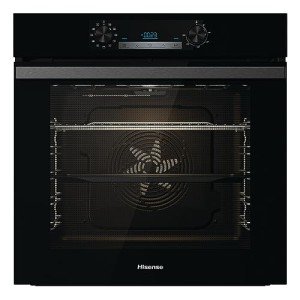Understanding Self-Cleaning Oven Technology
In modern-day kitchens, convenience typically rules supreme, and among the most innovative home appliances that exemplifies this pattern is the self-cleaning oven. Self-cleaning ovens can conserve users substantial energy and time when it concerns cooking maintenance. From comprehending the underlying technology to recognizing the advantages and possible drawbacks, this article offers a detailed overview of self-cleaning oven technology.
What is a Self-Cleaning Oven?
A self-cleaning oven is designed to clean its interior without the requirement for manual scrubbing and making use of chemical cleaners. This technology usually operates in two primary ways: through high-temperature pyrolytic cleaning or by utilizing steam. Both techniques intend to streamline the cleaning process while making sure that the oven remains sanitary and devoid of food residues.
How Does Self-Cleaning Work?
Pyrolytic Cleaning:
- This technique heats the oven to temperature levels reaching around 900 ° F(482 ° C ). At this extreme heat, food particles, grease, and other residues burn away, turning into ash. As soon as the cleaning cycle is complete, users can just wipe away the ash with a damp cloth.
Steam Cleaning:
- In contrast, steam cleaning operates at lower temperature levels, utilizing water to produce steam. The steam assists to loosen up food particle and grease, making it much easier to wipe the interior tidy.
Both options have their own benefits and downsides, making it essential for customers to select based upon their specific needs.
Advantages of Self-Cleaning Ovens
Self-cleaning ovens present a number of benefits:
- Convenience: The main advantage of self-cleaning ovens is the benefit they offer. With a self-cleaning function, users no longer require to spend hours scrubbing the oven on hands and knees after heavy cooking.
- Time-saving: The self-cleaning operation generally lasts a few hours, during which users can focus on other jobs in the kitchen area or their home.
- Hygienic Cooking Space: Self-cleaning ovens can effectively minimize germs and germs by reaching such high temperatures.
- Decreased Chemical Usage: Many users choose self-cleaning features to prevent chemicals often found in traditional oven cleaners, making it a greener option.
Possible Disadvantages
However, self-cleaning ovens are not without their downsides:
- Heat and Energy Consumption: The pyrolytic cleaning method can take in a considerable amount of energy and generate a great deal of heat, which might make cooking areas uneasy throughout the cycle.
- Time Requirement: Although the cleaning process is easier, it is still lengthy, which might not match users who want to clean their ovens rapidly.
- Wear and Tear: The high temperature levels associated with pyrolytic cleaning can potentially damage oven parts gradually if the oven is not effectively created.
Factors to consider When Choosing a Self-Cleaning Oven
When choosing a self-cleaning oven, there are a number of elements to think about:
- Type of Cleaning Technology: Choose between pyrolytic and steam cleaning based upon individual preferences and cooking practices.
- Size and Capacity: Ensure that the oven fits into the cooking area space while likewise fulfilling cooking requirements.
- Brand and Model Reviews: Research different brands and models to discover customer reviews that can offer an idea of reliability and cleaning effectiveness.
- User-Friendly Features: Look for additional features that improve the cooking experience, such as smart technology, extra cooking modes, and ease of access to controls.
Frequently Asked Questions (FAQs)
What is the normal period of a cleaning cycle in a self-cleaning oven?
The cleaning cycle can vary from 1.5 hours to over 3 hours, depending upon the level of cleaning required and the specific oven design.
Can I stop briefly or disrupt a self-cleaning cycle?
It is typically not recommended to interrupt a cleaning cycle because it could cause problems. It's best to permit the cycle to run its complete period.
Is it safe to use the oven while it is in self-cleaning mode?
No, it is essential to prevent utilizing the oven during the self-cleaning cycle due to the severe heat included.
Are self-cleaning ovens tough to preserve?
While the self-cleaning function greatly decreases the requirement for manual cleaning, users still need to perform routine maintenance to keep the oven in good working order, including inspecting seals and ensuring vents are clear.
Can self-cleaning ovens tidy every kind of spill?
Self-cleaning ovens are developed for many types of food spills, however certain heavy or burnt-on residues may require pre-treatment or a manual tidy in addition to self-cleaning.
In summary, self-cleaning oven technology represents a significant leap in kitchen area benefit, enabling home cooks to maintain hygiene with minimal effort. While they feature both advantages and downsides, understanding how self-cleaning ovens work can assist customers make informed choices that cater to their cooking habits and preferences. Whether Self Cleaning Oven Instructions saving time or minimizing making use of extreme chemicals, self-cleaning ovens could act as an important addition to contemporary cooking areas.
By considering their requirements and preferences, users can choose the ideal self-cleaning oven that makes the cooking and cleanup process easier and more effective.

